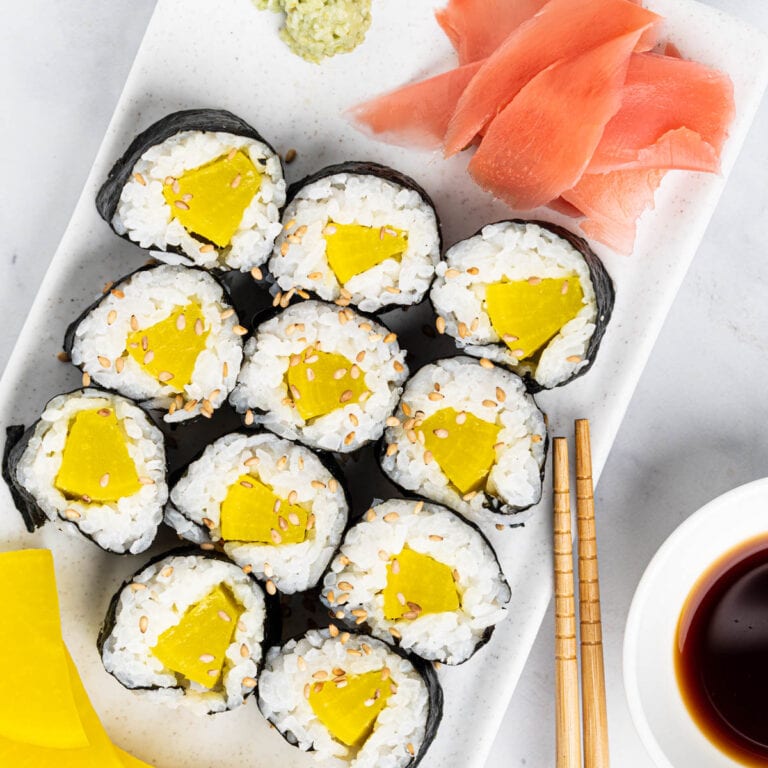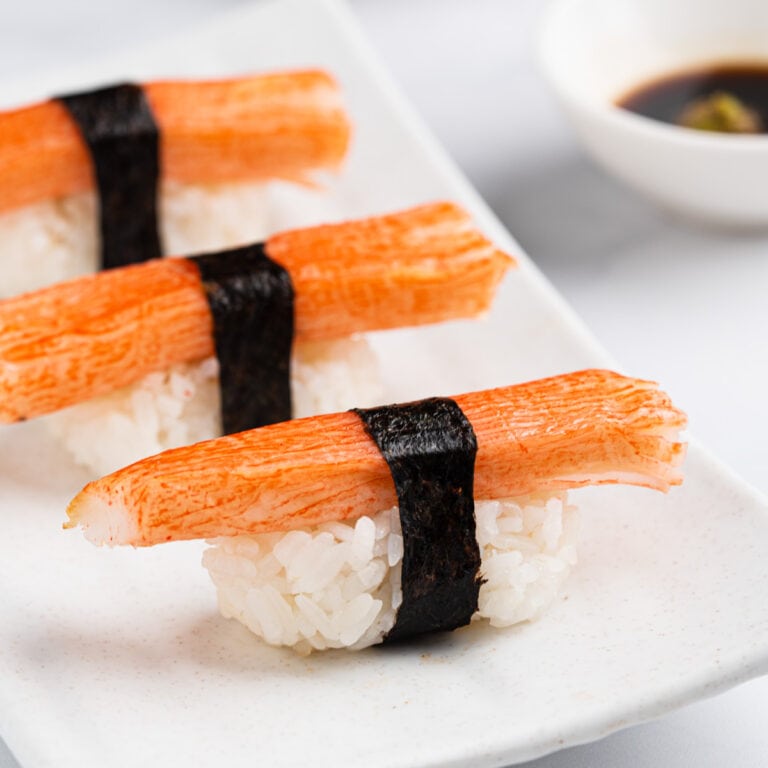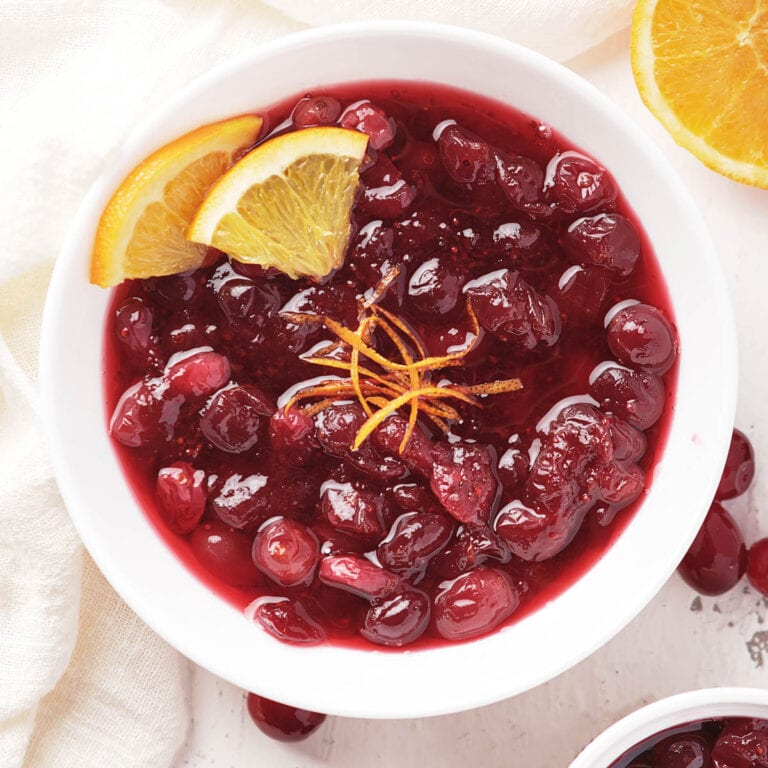Eel Sauce (Unagi Sauce)
Unagi sauce is a sweet and savory Japanese sauce, often used on grilled eel, and it’s like a flavor explosion with a perfect balance of sweetness and umami. The best part is it’s super easy to make at home with just a few ingredients, and you can use it for sushi, drizzle it on grilled meats or veggies, or even as a dipping sauce for your favorite snacks. You’ve got to give it a try!

What is eel sauce?
Unagi sauce, also known as “eel sauce” or “nitsume,” is a sweet and savory condiment commonly used in Japanese cuisine, particularly with dishes featuring grilled or broiled eel, such as unagi nigiri or unadon.
This thick, glossy sauce is made by simmering a mixture of soy sauce, mirin (a sweet rice wine), sugar, and sometimes sake until it becomes syrupy and takes on a rich, caramelized flavor.
The sauce adds a delicious combination of sweetness and umami to dishes, enhancing their overall taste and providing a delightful glaze or drizzle over various sushi and grilled dishes. Unagi eel sauce is a staple in many Japanese restaurants and is also popular with people looking to elevate their Japanese-inspired cuisine.
What does it taste like?
Eel sauce has a rich, sweet, and savory flavor profile with a hint of umami. It combines the sweetness of mirin and sugar with the deep, salty notes of soy sauce, creating a caramel-like taste that complements the grilled or broiled eel and other dishes it’s used with, adding a delightful depth of flavor to the food.
Does it have eel in it?
Unagi sauce, despite its name, typically doesn’t contain eel as an ingredient. Instead, it’s a flavorful sauce used as a condiment or glaze for dishes like grilled eel, and it’s made from a base of soy sauce, mirin, sake, and sugar, which gives it its distinct sweet and savory flavor.
Kitchen tools needed
- Saucepan
- Measuring cups and spoons
- Spatula
- Mortar and pestle (optional, to mash garlic)
- Fine mesh strainer
Gather your ingredients
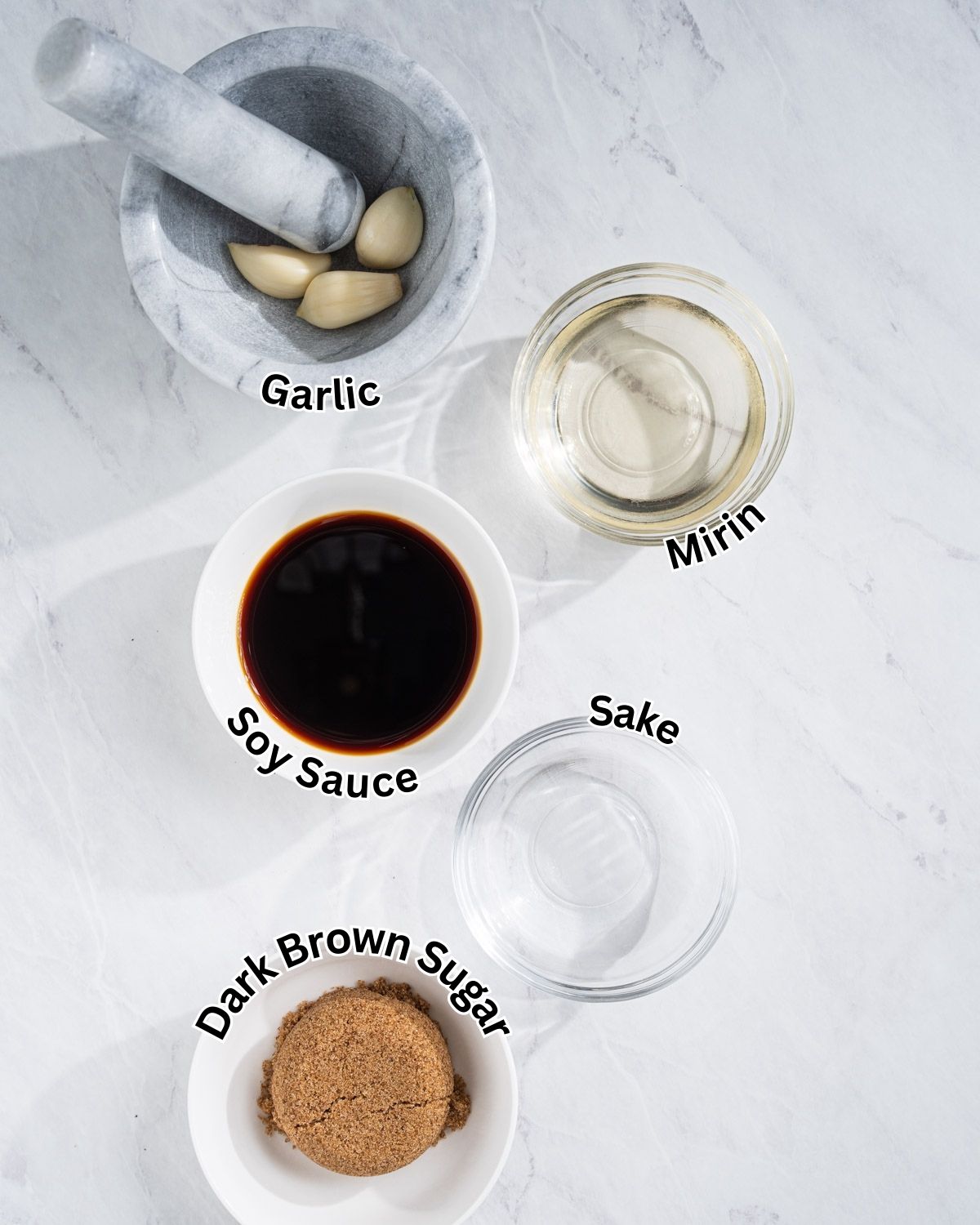
- Soy Sauce: This is renowned for its high umami content, the fifth basic taste sensation. Adding soy sauce to the tare sauce intensifies the umami component, making the sauce more flavorful and satisfying. Soy sauce contains salt, which helps balance the sweetness from ingredients like mirin and sugar in the tare sauce.
- Mirin and Sake: Sake and mirin are rice wines contributing to the depth of flavor in the tare sauce. Sake adds a rich umami quality, while mirin imparts sweetness and a slightly tangy note. Mirin and sake are commonly found in well-stocked supermarkets, liquor stores, or Asian grocery stores. They’re essential ingredients in Japanese cuisine and are often located in the condiments or international aisles.
- Dark brown sugar: Used to sweeten the sauce. You can also substitute with light brown sugar or granulated sugar.
- Garlic cloves: Mashed garlic is used to flavor the sauce. When the sauce is done cooking, strain the sauce to get rid of any garlic chunks.
Directions
Step 1: In a medium saucepan over medium heat, add all the ingredients and whisk together until smooth. Bring to a boil, then reduce heat to simmer and cook until the sauce has reduced to half and thickened enough to coat the back of a spoon, about 15 minutes.

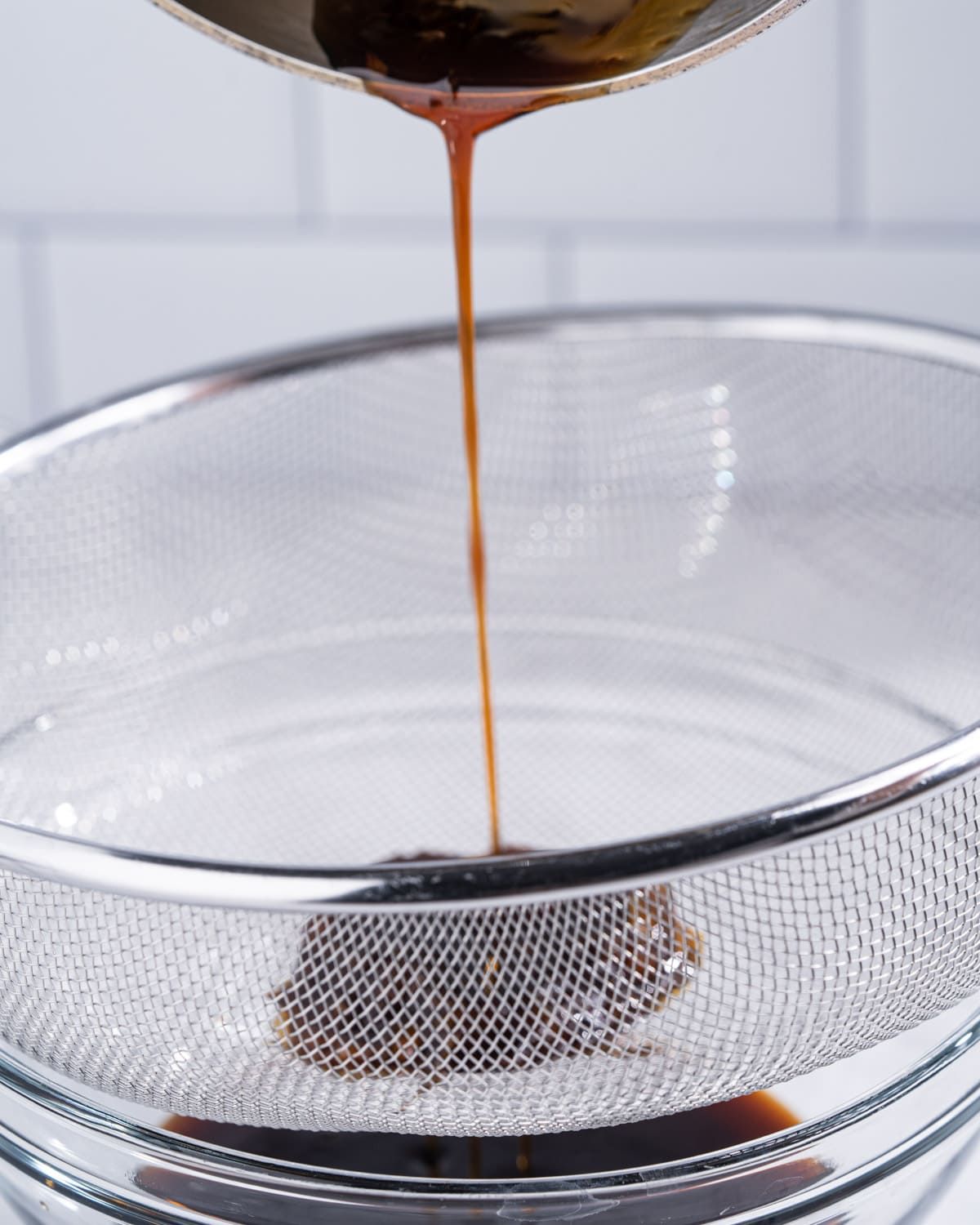
Step 2: Strain the sauce through a fine mesh strainer.

Here are some ways to use this delicious sauce:
- Grilled or broiled eel (Unagi): Eel sauce is a classic accompaniment to grilled or broiled eel dishes, such as unagi nigiri (eel sushi) or unadon (grilled eel over rice).
- Sushi and sashimi: It can be drizzled over sushi rolls, sashimi, or nigiri to add a sweet and savory glaze or dipping sauce.
- Teriyaki dishes: Eel sauce works well as a glaze for teriyaki chicken, beef, or tofu, providing a delightful sweetness and umami kick.
- Seafood: It can be used as a sauce for grilled or baked fish, shrimp, or scallops, enhancing their flavor with its sweet and savory notes.
- Rice bowls: Add it to rice bowls, like donburi or poke bowls, to create a delicious flavor contrast with the other ingredients.
- Stir-fries and noodle dishes: Eel sauce can be used as a finishing touch in stir-fried dishes or as a flavorful drizzle over udon or soba noodles.
- Vegetables: It can be used to glaze and flavor roasted or grilled vegetables, adding a touch of sweetness to the savory flavors.
- Marinades: Eel sauce can also be used as a component of marinades for meats or vegetables, imparting a sweet and savory profile.

How to store leftovers
Allow the eel sauce to cool to room temperature if it’s still warm from its previous use. Pour the leftover eel sauce into a clean and airtight container. A glass or plastic container with a tight-sealing lid works well.
Refrigerate: Place the container in the refrigerator. Eel sauce should always be stored in the refrigerator to prevent spoilage and maintain its quality. Ensure the container is tightly sealed to prevent odors from the refrigerator from affecting the sauce.
Avoid Freezing: It’s not recommended to freeze eel sauce. Freezing can alter the texture and flavor of the sauce, making it less enjoyable when thawed.

Eel Sauce (Unagi Sauce)
Equipment
- Measuring Cup
- saucepan
- fine mesh strainer
- silcone spatula
Ingredients
Instructions
- In a medium saucepan over medium heat, add all the ingredients and whisk together until smooth. Bring to a boil, then reduce heat to simmer and cook until the sauce has reduced to half and thickened enough to coat the back of a spoon, about 15 minutes.
- Strain the sauce through a fine mesh strainer.

